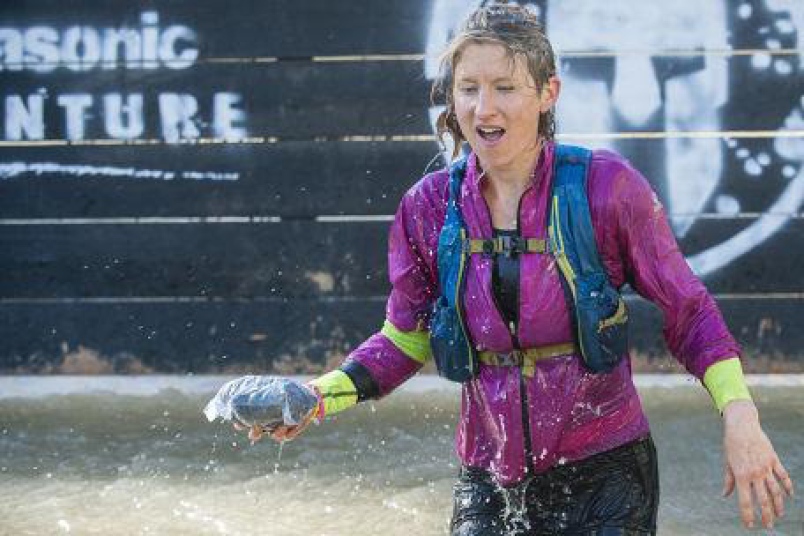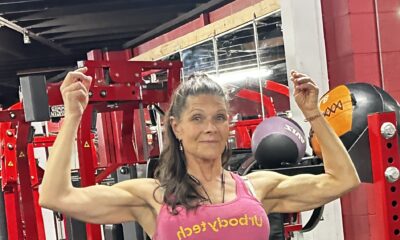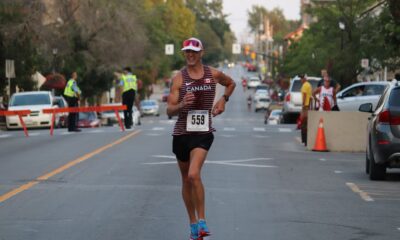Allison Tai, a certified coach, and established distance runner found her niche when she decided a few years ago to try her hand at obstacle racing.
For most people, the notion of running 10 to 12 miles in a straight line from A to B is asking too much.
Now throw in some walls to climb over, some heavy tires to drag, and wire covered water-filled canals to crawl through over the hectares of mud, and Tai, mother of two thinks,
‘Finally – a challenge that’s tailor-made for me!’

While some observers tend to bestow superlatives like amazing, incredible, or other-worldly onto Tai – deservedly so – I prefer, mind-numbing.
She not only competes in the most grueling obstacle races, she wins many of them.
In 2018 she added the title of World Champion to her resume when she won the inaugural Obstacle Race Course World Championships Enduro.
When she’s not competing, the Vancouver native is training others before switching hats to wife and mother.
Tai is laid back and down to earth, and while no stranger to the running scene, prefers the lesser-known, though the growing sport of obstacle course racing.
Yet she has been interviewed on numerous occasions by mainstream media to talk about her performances and training tips.
Today in this space she offers her expertise on the importance of adding strength training to improve your running and help prevent injury.
She also shared her eight weeks strength programs which, due to space restrictions here you can find by going to my blog on my website.
If you are planning to start a running program, adding strength exercises is the key to lifelong running.
Tai says, “One of the most overlooked components in strength training for runners is single-leg stability. Running is essentially the transfer of your entire body weight from one leg to another – over and over again – often for hours and hours. I would wager that not being stable in the single-leg stance presents the largest injury risk for runners.”
She continues: “Forget shoes, forget surface, forget running program they follow; if they aren’t able to maintain alignment through that chain, they are robbing themselves not only of speed and power but of pain-free running. A weak landing stance puts ton of pressure on your knees, hips, and back with every step.”
To keep proper form, Tai advises people to “Test their single-leg stance by first standing in front of a mirror on one leg.
Does your hip (stick) out? Does your knee cave inward? Can you stand beside a wall and lift the leg that’s furthest from it (the wall makes it such that your hip has nowhere to go)? Then add a knee bend to the single-leg stance. Are you able to maintain that alignment? Chances are good that if you notice any deviation, you should work on your lateral stability. You can start on the floor doing clamshells, side leg lifts, but beware that you are not rocking your pelvis backward. Tap into the correct muscles you need to keep your pelvis stable. Imagine you had two headlights shining straight on the wall in front of you and don’t let them wander.”
She has more: “Once you’ve activated those muscles, you can take them into more applicable movement patterns.
I like to start with an RNT static or reverse Lunge (even just with a resistance band) since you get a lot of feedback from the band in terms of where your alignment should be and what your hip needs to do to get there.
I’m also a big fan of monster walks done correctly (think about sliding across the floor, this is not Zumba class).
You can then transition into even more applicable exercises: step-ups, single-leg glute bridges, lunge walks, single-leg squats with the rear leg elevated (weight is on the front leg).
If you end up just going through the motions chasing reps you’ve likely fallen into old patterns and are training bad habits. Don’t do it 😉
“You’ll notice a single leg theme, Tai says, before concluding, “The fantastic bonus about single-leg movements is that you’ll also be working the muscles that runners benefit most from. Once these become easy you can start loading them and adding weight and plyometrics. Just like on the roads or trails, in the gym there is no finish line.”
Check out Tai’s Strength Training eight-week program on Christine’s blog on her website www.runwithit.ca








